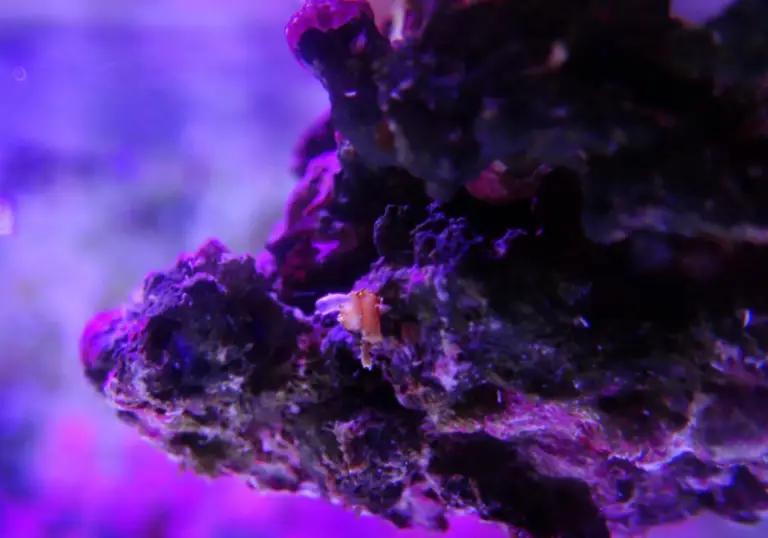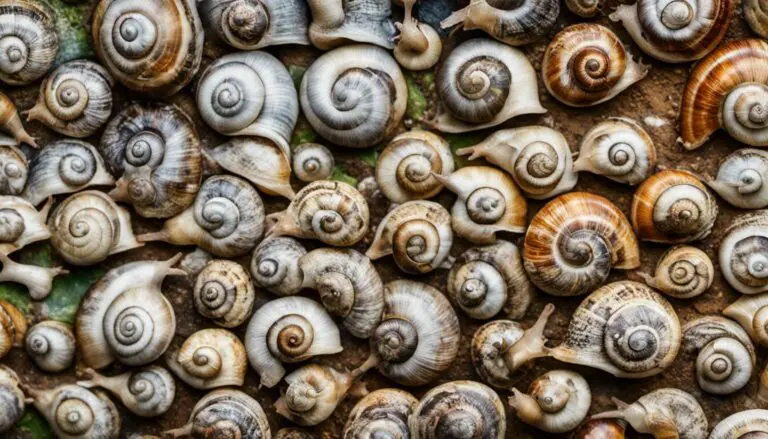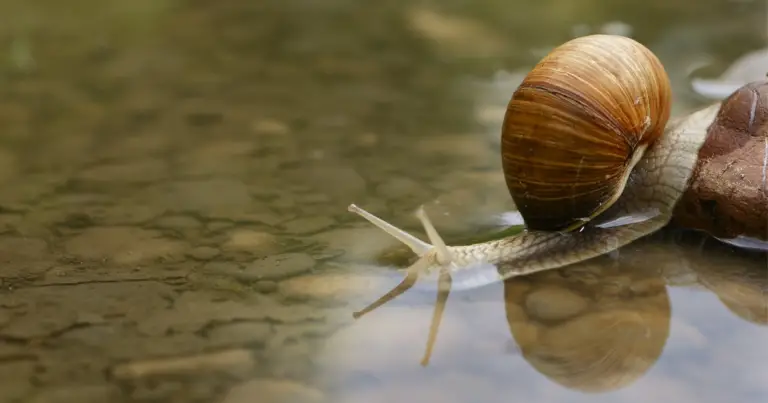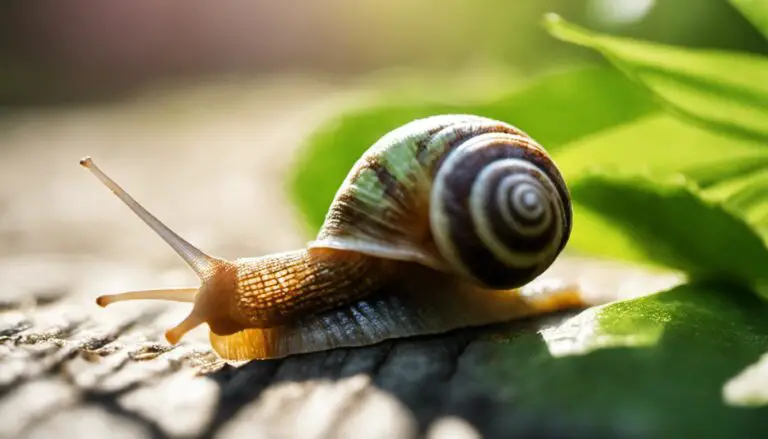Do Mystery Snails Sleep?
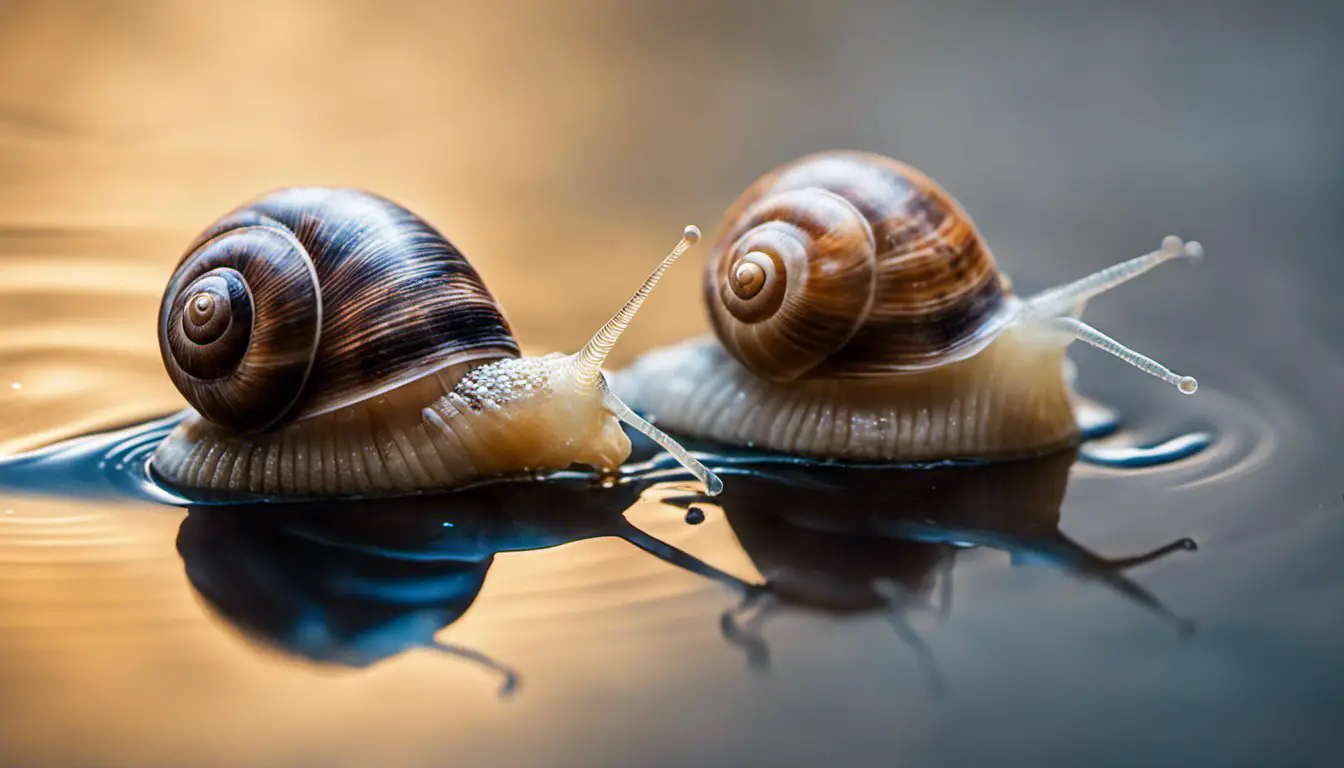
You might be curious about the sleep habits of mystery snails, a fascinating and popular creature in the animal kingdom, especially among aquarium enthusiasts. Like all animals, mystery snails have a sleeping cycle, and understanding their sleeping habits can help you better care for these lovely freshwater pets.
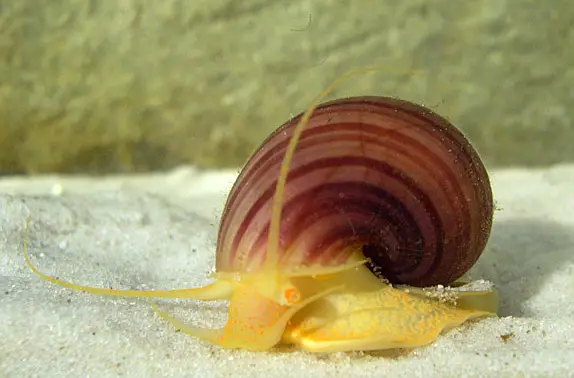
Mystery snails are known for their adorable appearance and practical benefits, such as algae consumption, which helps keep your aquarium clean. But have you ever wondered if they sleep like other animals do? The answer is yes, they do have a sleep schedule. Mystery snails sleep for about 13 to 15 hours every 2 to 3 days, then remain awake and active for about 30 hours before falling asleep again.
In addition to their sleep cycle, it’s intriguing to learn that mystery snails are nocturnal creatures. Their light-sensitive and quiet nature contributes to their preference for nighttime activity. With this newfound knowledge of their sleeping habits, you can even more appreciate and care for your mystery snails.
Contents
Table of Contents
Understanding Mystery Snail- Sleep Patterns

Daytime and Night-Time Sleep Cycle
Mystery snails have a unique sleep cycle that may differ from what you initially expect. They sleep, but their sleep patterns aren’t strictly nocturnal or diurnal. These creatures tend to be more active during the day but can also exhibit night activity. Like all animals, mystery snails do need rest. They usually fall asleep for approximately 13 to 15 hours every 2 to 3 days. After waking up, they remain alert for 30 hours before sleeping again.
Understanding the sleep patterns of your mystery snails is crucial to providing them with the best care possible. Take note of their activity levels daily and night to better understand their sleeping habits. Observing them in their natural environment will help you determine if they are getting enough rest.
Sleep Patterns During Hibernation
Hibernation is another aspect of mystery snail behavior that may influence their sleep patterns. When a mystery snail hibernates, it will hide its entire body inside the shell, and its size remains unchanged.
Some mystery snails can sleep during hibernation for as long as two years. It is crucial to differentiate between regular sleep and hibernation, as a dead mystery snail’s body will curl up and shrink in size. Keeping an eye on your mystery snails and observing their activity levels is essential in detecting whether they are hibernating or experiencing health issues.
In conclusion, knowing your mystery snails’ sleep patterns, both during the day and night and during hibernation, will allow you to provide proper care and maintain a healthy environment.
Physical Attributes Influencing Sleep
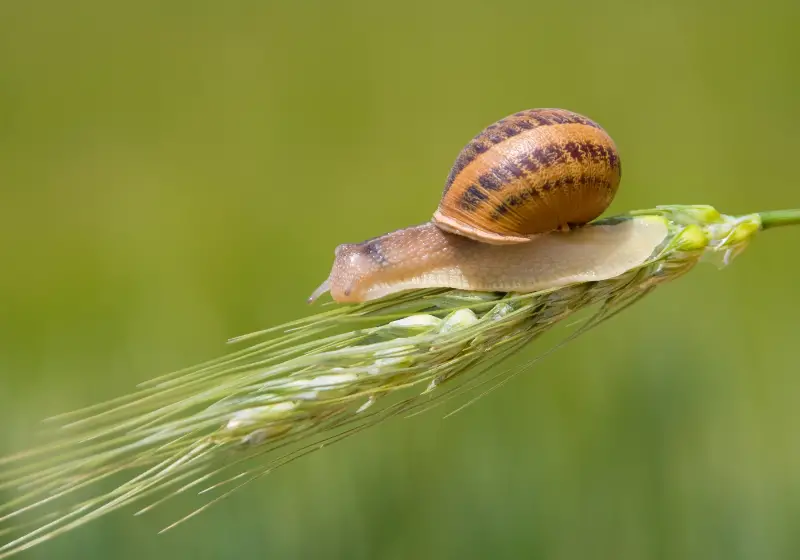
Influence of Tentacles and Eyes
Like other snails, Mystery snails possess tentacles and eyes, which play a role in their sleep pattern. Their tentacles are sensitive and help them detect their surroundings, which is crucial in navigating their environment during their active hours. The eyes of mystery snails are light-sensitive, meaning they become more active during darker periods. As a result, they are nocturnal creatures, which influences their sleep pattern.
Role of Operculum
The operculum is an essential part of a mystery snail’s anatomy. It is a hard, protective plate that serves as a door for the snail’s shell, closing the opening when the snail retracts. This feature allows mystery snails to sleep safely inside their shells, protected from potential threats. Additionally, the operculum enables them to regulate their moisture level, providing a suitable environment for rest and sleep.
Foot Functionality
Mystery snails make use of their muscular foot to move around their environment. The foot is responsible for locomotion and is essential to their overall activity level and behavior. When mystery snails sleep, their foot and other muscles relax, allowing them to rest comfortably. They usually sleep for 13 to 15 hours with intervals of 30 hours in between their sleeping sessions.
During this time, their reduced activity and relaxed muscles contribute to energy conservation, crucial for their survival and overall well-being.
The Living Environment and Its Impact
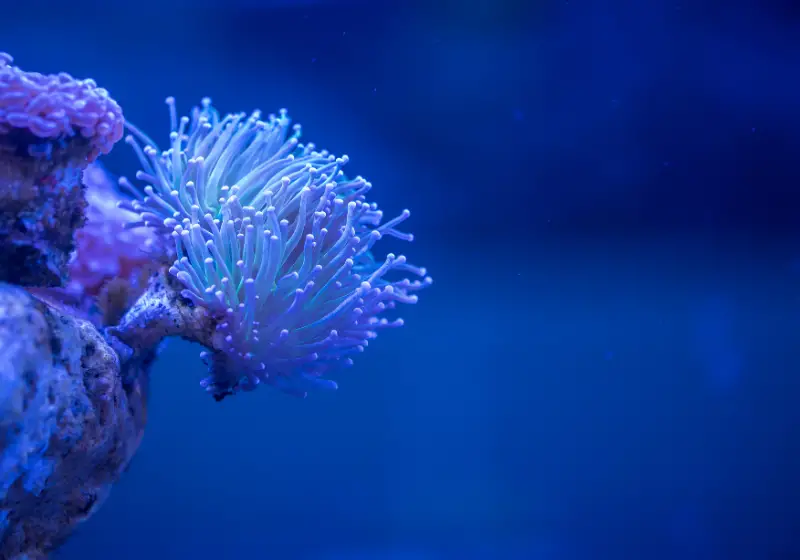
Aquarium Conditions
To keep your mystery snails healthy, maintain the right aquarium conditions. A well-maintained tank is important for your snails’ sleep cycle and overall well-being. Ensure your aquarium has sufficient water quality and appropriate pH levels to avoid disrupting your snail’s sleep pattern. A balanced home aquarium usually means happy and active mystery snails.
Temperature Influence
Temperature plays a significant role in the living environment of your mystery snails. They can only withstand cold up to 19.4 to 17.6 degrees Fahrenheit (-7 to -8 degrees Celsius) ^1^. If the temperature is too low, your snails may experience a decrease in their quality of life, which could further affect their sleep patterns. Be sure to maintain a consistent temperature in their tank to keep them comfortable and healthy.
Influence of Light
Mystery snails are light-sensitive and nocturnal. Providing an environment where they can experience periods of darkness for proper rest is crucial. Furthermore, excess light exposure may stress your snails and disrupt their sleep schedule. Adjust the light settings in your home aquarium according to the needs of your mystery snails.
Remember to pay attention to the living environment, including the aquarium conditions, temperature, and influence of light in your mystery snail’s habitat. Proper care ensures a better quality of life and a well-rested snail, contributing to its overall well-being.
Feeding and Its Connection to Sleep
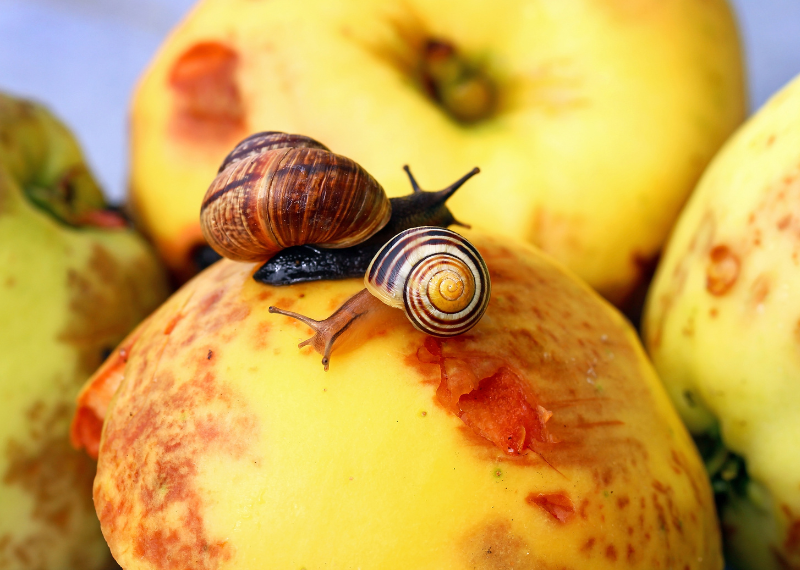
Effects of Algae Diet
Mystery snails are known for their ability to consume algae in aquariums, helping keep the water clean. When consuming algae, these invertebrates have a consistent source of nutrition. As a result, this can directly impact their sleep patterns. A well-fed mystery snail with enough algae available will be more likely to follow its normal sleep cycle, which consists of bouts of 12-13 hours of sleep followed by 30 active hours.
Responses to Lack of Food
Mysterious snails might adjust their sleeping schedules when there is a lack of available food, such as algae or other forms of vegetation. They tend to roam the tank at night, searching for potential food sources. This nocturnal behavior can directly result from limited access to their preferred diet.
Without proper nourishment, mystery snails may exhibit unusual sleeping habits to find alternative food. Dried and dead leaves can become a backup diet with insufficient algae sources.
Influence of Scavenging Habits
The scavenging nature of mystery snails does not only apply to algae. They also feed on other organic materials that accumulate at the bottom of the tank, further influencing their sleep schedule and habits. If they encounter fallen food particles from other aquarium inhabitants during their nighttime exploration, they may adjust their sleep patterns to take advantage of the additional food source.
In conclusion, the availability of algae and other food sources and the scavenging habits of mystery snails play a crucial role in determining their sleep schedule. A well-fed and well-maintained snail will stick to its usual sleeping cycle, whereas those searching for food may exhibit nocturnal behavior.
Behavior During Inactivity
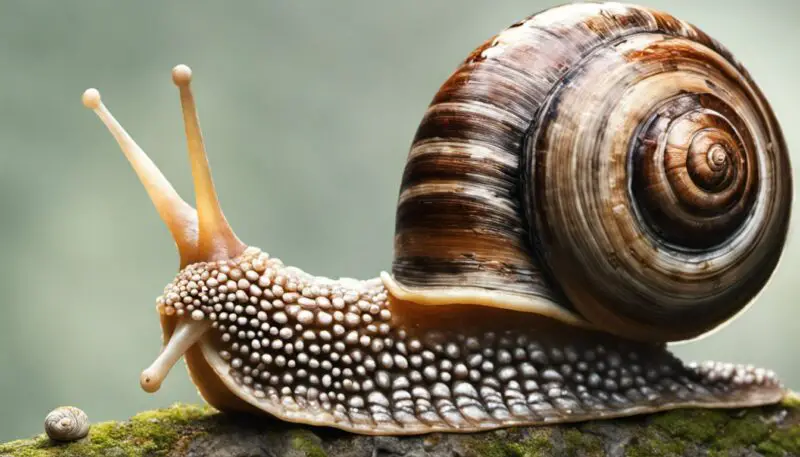
Role of Mucus
During inactivity, mystery snails excrete a sticky and slippery substance called mucus. This mucus helps them maintain their body’s moisture levels while acting as a protective barrier against potential threats. When you notice your mystery snail being less active, it can indicate that it’s resting or experiencing a moment of quiescence.
As a mystery snail owner, you should be familiar with the role of mucus in their life. The mucus they produce is a protective layer and aids in their movement. Using the mucus, they glide smoothly across surfaces in the aquarium, making it easier to explore their environment and find food.
Understanding Aestivation
Aestivation is another behavior exhibited by mystery snails during inactivity. This is a state of dormancy or rest, similar to hibernation, where the snail conserves energy and resources in response to unfavorable environmental conditions. You need to understand that aestivation helps snails cope with extreme temperatures, water quality issues, or lack of food.
When a mystery snail goes through aestivation, it often seals itself inside its shell by producing a thick, dry layer of mucus called an operculum. This mucus barrier allows the snail to maintain moisture and protect itself from potential harm.
Keep an eye on your snail during this period, as it may appear inactive or dead, but it is actually dormant. It will eventually resume activity once the environmental conditions improve.
In conclusion, be aware of the signs of inactivity and mucus production in your mystery snail, and understand the concept of aestivation. These factors are essential for ensuring the well-being of your snail and providing a suitable environment for it to thrive.
Is My Snail Dead, Alive or Resting? Mystery Snails, Nerites, Ramshorn Snails
Co-Existing in an Aquarium
Interaction with Tank Mates
Mystery snails are known for their peaceful temperament and non-aggressive nature, making them great companions for various tank mates. They can easily coexist with fish and other aquatic creatures with similar gentle behavior. Due to their preference for algae and detritus, they often help maintain the cleanliness of your aquarium.
It is essential to select tank mates that do not pose a threat to the mystery snails. Some ideal companions include certain species of tetras, guppies, and other small, non-aggressive fish. Ensure the tank environment remains stable and stress-free for all its inhabitants by providing adequate space, hiding spots, and proper water conditions.
Effect of Predators
In an aquarium, mystery snails may face threats from predators like aggressive fish and crayfish. It is important to avoid introducing these predators into your tank, as they can harm or even eat your snails. Common predatory fish to avoid include cichlids and larger loaches, as they may prey on the snails or disturb their peaceful environment.
To protect your mystery snails from potential predators, make sure to provide plenty of hiding spaces in your aquarium. Dense plants, caves, and other structures help snails feel secure and discourage predators from approaching them. Additionally, maintain a consistent aquarium environment and closely monitor the health and behavior of your snails to ensure their safety and well-being.
Mystery Snail Species- A Comparative Analysis
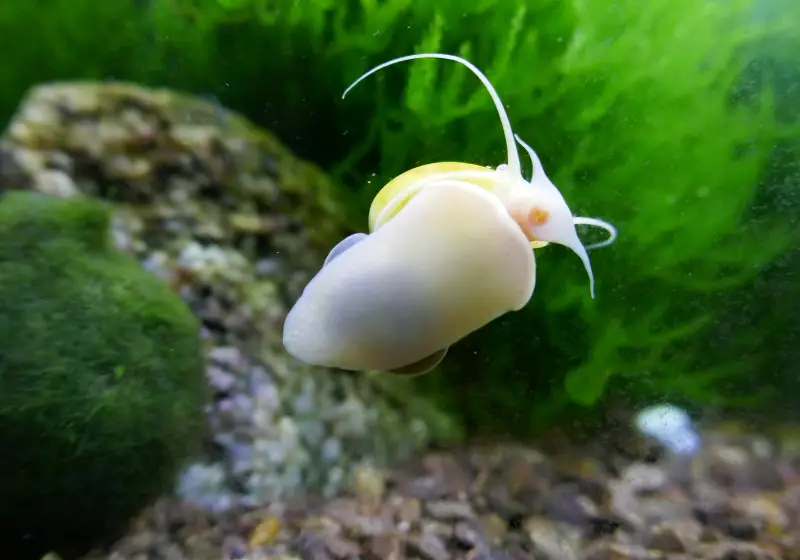
Pomacea Bridgesii- Activity and Sleep Patterns
Pomacea bridgesii, commonly known as the mystery snail, is a freshwater snail native to South America. It is a popular choice for aquarium enthusiasts who appreciate its low maintenance requirements and interesting behavior. When it comes to activity, mystery snails follow a unique sleep pattern. They sleep for approximately 13 to 15 hours every 2 to 3 days, and after waking up, they remain active for the next 30 hours before falling asleep again source.
While awake, you may notice your mystery snail to be more active during nighttime as they are nocturnal creatures due to their light-sensitive and quiet nature. By adopting a nocturnal schedule, they can better avoid predators and ensure a peaceful environment during the day.
Spike-Topped Apple Snail- Sleep Habits
The spike-topped apple snail is another name for Pomacea bridgesii, the same species as the mystery snail. As a result, the sleep habits of the spike-topped apple snail are identical to those of the mystery snail. They, too, exhibit nocturnal behavior, staying active mostly during the night and being more dormant during daylight hours.
Remember to consider the sleep habits of your chosen snail species when maintaining an aquarium. Ensure that the snail’s environment is conducive to their natural sleep cycle, providing darkness during their active nocturnal periods and a peaceful environment when they need to rest. By understanding and accommodating the needs of your mystery snail, you are more likely to enjoy a healthy and thriving aquarium space.
Understanding the Health Indicators
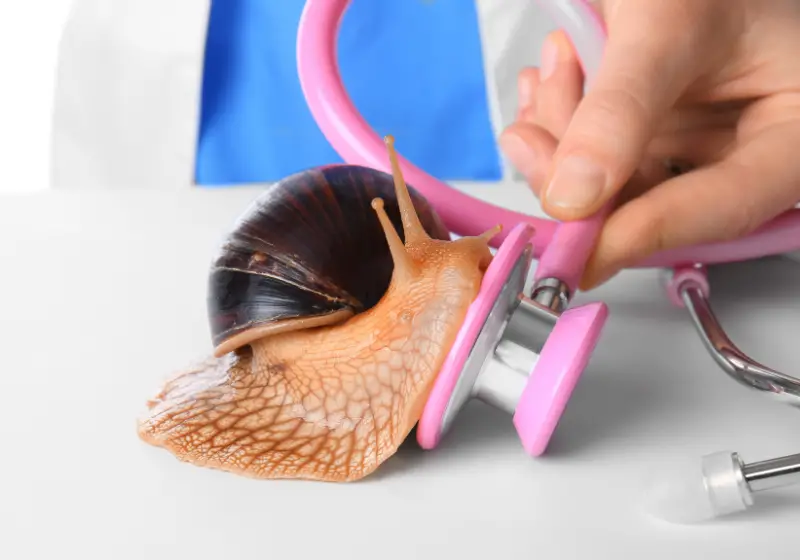
When observing your mystery snails, it’s important to know certain health indicators to help you identify their well-being. In this section, we’ll cover some essential aspects to look for, such as their positioning in the tank, changes in movements, and color changes.
Positioning in the Tank
A healthy mystery snail should actively move around the tank or attach to surfaces while scavenging for food. If your snail consistently stays in one spot or upside down without movement, it may indicate a lack of energy or illness. In such cases, monitoring the tank environment, such as the water temperature and quality, is essential to ensure optimal conditions for your snail.
Changes in Movements
Snails usually have a steady pace when moving around the tank. If you notice a sudden decrease in your snail’s activity or an inability to move normally, this could be a sign of distress or sickness. Staying alert to these changes makes it easier to address any potential issues and ensure your snail’s well-being.
Colour Changes
A healthy mystery snail should have a vibrant color, indicating that it receives proper nutrition and lives in a suitable environment. However, if you observe that your snail’s colors are fading or turning dull, this could indicate stress or poor health. It’s essential to address potential causes, such as inadequate food or less-than-ideal water conditions, to ensure your snail thrives.
By carefully observing your snail’s behavior and appearance, you can better understand its overall health and make adjustments to maintain a healthy environment for your mystery snail to thrive in.
Caring for Mystery Snails
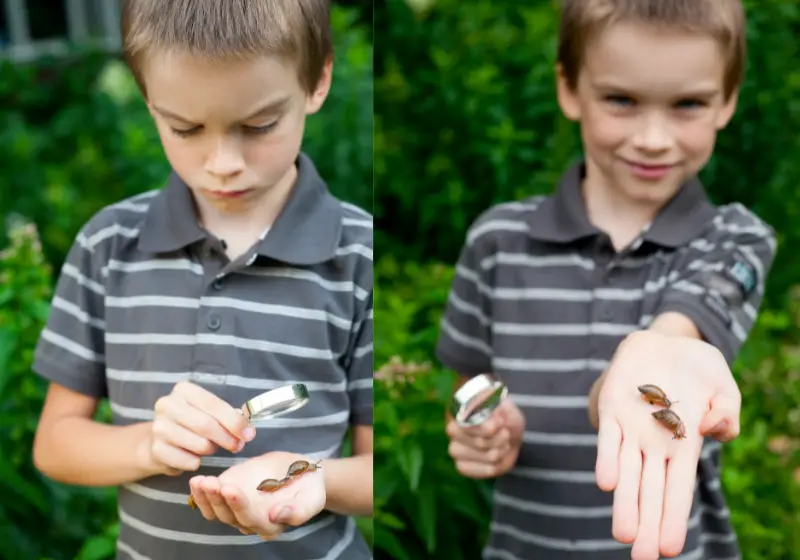
Providing Suitable Water Conditions
To keep your mystery snails healthy and happy, it’s essential to maintain proper water conditions in their aquarium. Freshwater snails require a stable water temperature between 68-82°F (20-28°C) and a pH level of 7.0-8.0. Regularly test the water and ensure adequate filtration to avoid the buildup of harmful ammonia, nitrite, and nitrate.
Regular water changes are crucial to maintaining a clean environment for your snails. Aim for a 25% water change weekly or bi-weekly, depending on the tank size and bioload.
Optimal Feeding Habits
Mystery snails are herbivores, which means they primarily consume plant matter. Providing a balanced diet is crucial for their health and well-being. Offer a variety of foods, including:
- Algae wafers or pellets
- Blanched vegetables like spinach, lettuce, or zucchini
- Sinking pellets rich in plant matter
- Occasional treats like frozen or live brine shrimp
Avoid overfeeding, which can lead to poor water quality and negatively affect your snail’s metabolism. Remove any uneaten food after a few hours to prevent it from decomposing in the tank.
Importance of Regular Monitoring
Keeping a close eye on your mystery snails ensures they thrive and identify potential issues early on. Regularly monitor their behavior and health by observing their movement, activity levels, and shell condition. A healthy snail will be active and have a firm, intact shell without cracks or erosion.
By maintaining proper water parameters, providing a balanced diet, and regularly monitoring your snails, you can ensure their well-being and enjoy their unique presence in your aquarium for years.
Conclusion: Do Mystery Snails Sleep
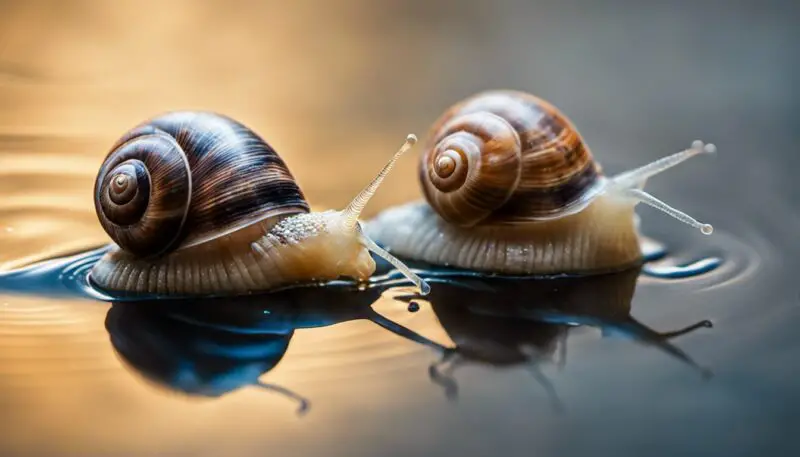
In your journey to understand mystery snails better, you’ve learned crucial information about their behavior and sleeping patterns. Mystery snails do sleep, having a repeated cycle of staying alert for 30 hours and then falling asleep for approximately 13 to 15 hours every 2 to 3 days. They are primarily active at night, making them nocturnal creatures.
These fascinating snails, originally from South America, have become popular among hobbyists for their attractive appearance and ease of care. They possess a siphon, which allows them to breathe air from the water surface and can grow to a diameter of around 2 inches.
When setting up an ideal environment in captivity, provide them with suitable plants like Anubias, Java moss, and Hornwort. These aquatic plants serve as a natural habitat for your mystery snails and aid in maintaining water quality. The mystery snail is relatively easy to breed as it can lay its eggs above the waterline.
Though they don’t truly hibernate, some mystery snails may undergo a state of torpor or aestivation. Land snails are known to hibernate, but this may or may not apply to certain species of mystery snails. Monitoring them closely is essential to ensure they’re not affected by parasites or showing signs of illness.
By carefully following this guide and providing a supportive environment for your mystery snails, you’ll enjoy their presence in your aquarium for their entire lifespan – typically around 1 to 2 years. As you continue to gain more knowledge and expertise in caring for these captivating creatures, they’ll surely bring you joy and satisfaction as a beloved member of your aquatic family.
Frequently Asked Questions
Do mystery snails have a specific sleep pattern?
Yes, mystery snails do have a specific sleep pattern. They follow a repeated sleeping cycle in which they sleep roughly 13 to 15 hours every 2 to 3 days. After waking up, they remain alert for the next 30 hours before sleeping again source.
How can I tell if my mystery snail is asleep or dead?
It can be difficult to tell if your mystery snail is asleep or dead. When they are asleep, they often close their operculum (the trapdoor on their shell) and remain still. However, a dead snail will have a slightly opened operculum and might also release a foul smell. In case of doubt, you can gently tap their shell or place them near food to see if they respond.
Do mystery snails sleep in specific positions?
Mystery snails may sleep in various positions, such as on the substrate, attached to the aquarium glass or decorations, or even floating on the surface. It actually depends on their individual preference and the tank environment.
Do aquatic snails, including mystery snails, hibernate?
Some aquatic snails may hibernate under certain conditions, but mystery snails do not hibernate in aquariums source. Their activity levels may be influenced by the availability of food and the tank conditions; however, they do not go into true hibernation like some other species.
What are the ideal conditions for mystery snail sleep?
The ideal conditions for mystery snail sleep will involve stable water parameters, appropriate temperature, and low light intensity. Ensure that your tank maintains a consistent temperature between 68 and 82 degrees Fahrenheit (20 to 27 degrees Celsius) and has a regular day and night cycle to help them establish a more natural sleep pattern.
Can the tank environment affect mystery snail sleep?
Yes, the tank environment can affect mystery snail sleep. Factors such as a sudden change in water temperature, water parameters, or lighting conditions could disturb their sleep pattern. Additionally, any stressors in the tank, such as aggressive tank mates or overcrowding, may also impact their sleep and overall well-being. To ensure a healthy and comfortable environment for your mystery snail, maintain stable and optimal aquarium conditions.

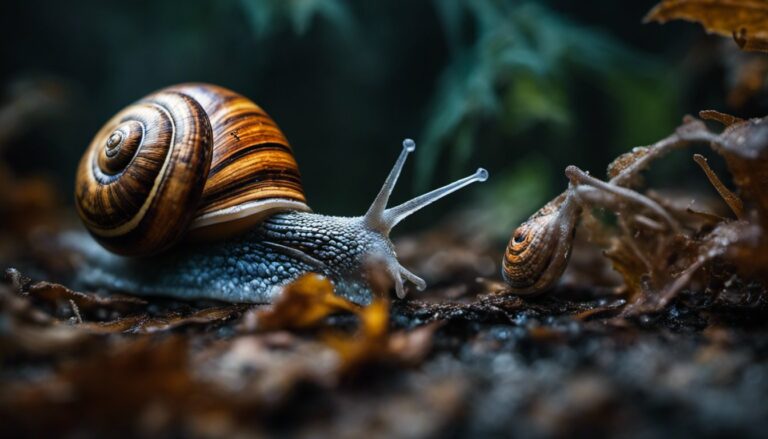
![Do Snails Eat Grass? [Complete Answer]](https://allourcreatures.com/wp-content/uploads/2021/10/snails-eat-grass-768x519.jpg)
